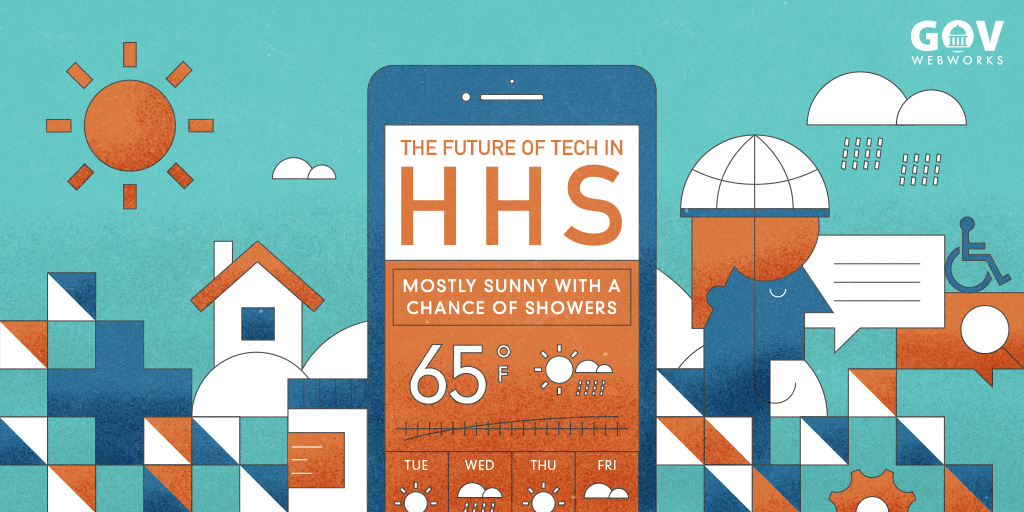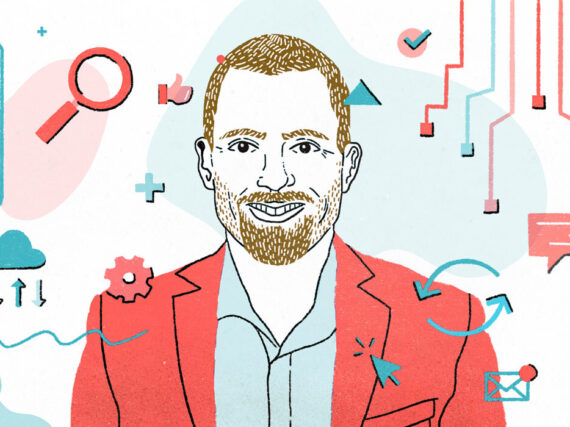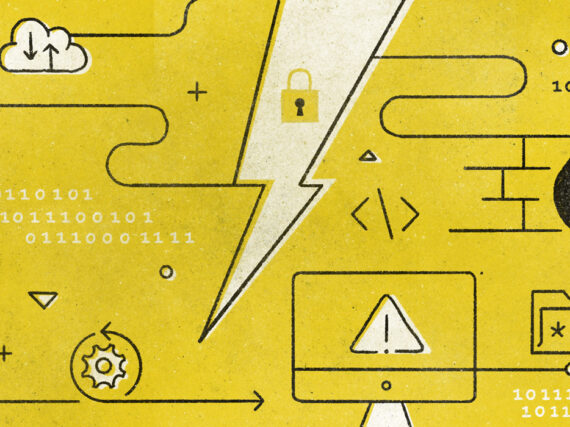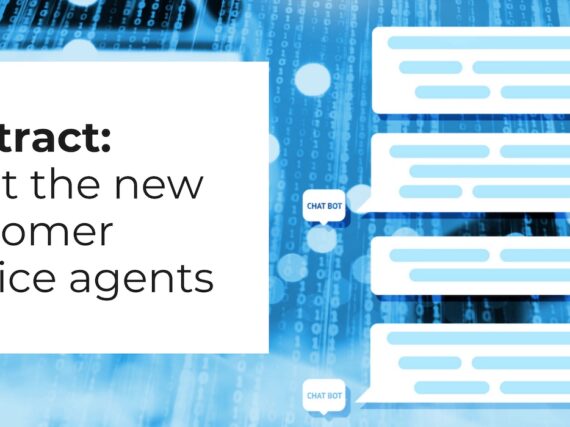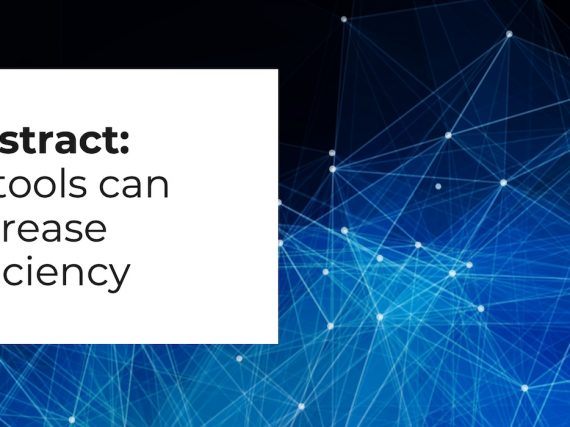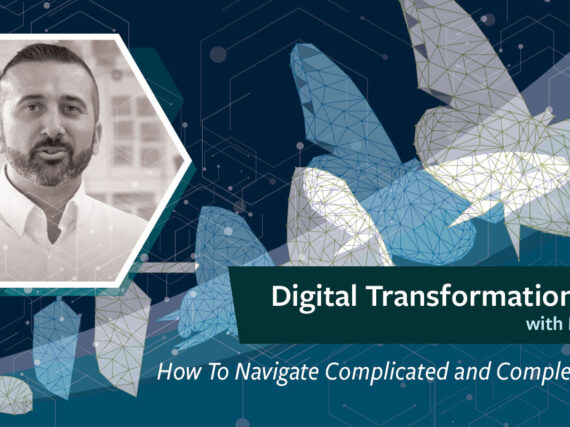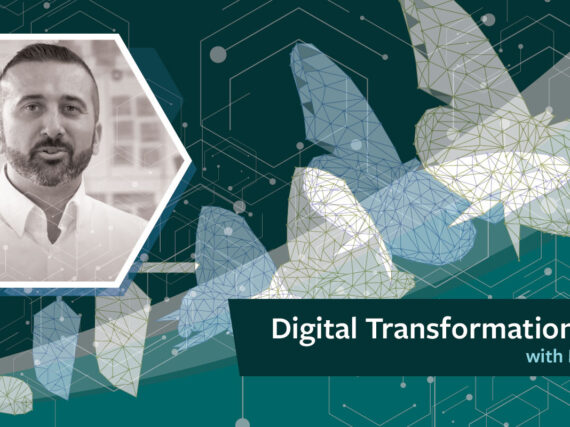Just as the British famously complain about the weather, many consumers of government services quietly grumble about lagging technology from our public sector entities. They might cite a lack of innovation, poor customer service, and technical stagnation. This perception has created a sense of seasonal affective disorder.
I recently discussed these thoughts at a panel on the future of technology systems for Health and Human Services (HHS) at the CompTIA annual Technology Summit. As a member of the HSITAG subgroup for policy and issues, my colleagues at GovWebworks asked me to provide my predictions here for the future of technology in HHS.
From my perspective, the forecast looks sunny, with a potential for rain clouds. On the sunny side, new technologies provide better customer service and government efficiency, however the rain clouds include issues with security, privacy, and other concerns, addressed herein.
The current weather
Seventy-three percent of state and local government officials believed their organization’s digital capabilities are behind those in the private sector, according to a recent Deloitte digital government survey.
However, this gap is beginning to close. In February 2018, the Federal News Network reported that government has reached a new high of nearly 70 percent satisfaction with their online service provisions. CMS also reports a 75 percent satisfaction rate with most CMS websites. These numbers are coming in just below the average satisfaction score for private sector entities, which average in the 80s.
Furthermore, recent legislative mandates are urging a more robust, data-driven, and citizen-centric approach to expanding digital services within government. For instance, the President’s Management Agenda, released in March 2018, lays out a long-term vision to modernize federal government services. The agenda’s aim is to ensure that government no longer lags behind the private sector in customer experience.
The three main goals of the agenda are:
- IT: Using IT to enable government to provide better services
- Data: Launching data, accountability, and transparency initiatives to deliver better results and more accountability to tax payers
- Workforce: Re-skilling to build a workforce for the 21st century
In conjunction with this, we’re seeing winds of change in both the healthcare and social service sectors. Some of the new technologies currently being adopted to improve outcomes include cloud computing, IoT wearables, predictive analytics, mobile apps, and user-centered design.
Ultimately, citizens (customers) just want a quick response to their enquiry. Government is starting to focus on integrated technologies, interoperability of software applications, and a focus on customer experience. It appears the weather is beginning to improve.
Benefits of tech, with a hitch
As McKinsey notes, technology is currently one of the biggest drivers of operational efficiency. More data collection allows for better measurement of results, and better informed decisions.
Additionally, this abundance of data can create a hyper-personalized way of looking at each customer. Thereby case workers are enabled to apply more specific, and creative solutions for each individual.
To this end, HHS is exploring different technologies such as:
- Really big data
- Wearable devices for healthcare, as detailed by Gartner
- Integration and connectivity of devices
- AI powered chatbots to answer routine questions
- Intuitive mobile apps
- Increased search functionality
These technologies increase the speed and accuracy of results, improve our interaction with government, and clear the way for more creative human connections.
However, this sunny outlook is clouded by certain risks. To keep the forecast bright, it’s important to hold the following issues in mind when adopting new tech for HHS:
1. Tech adoption is growing, that’s a given, but we still need human input
The more we read about technology success stories and their demonstrated ROI, the more the demand for new tech grows. As we see formerly complex tasks becoming efficient and highly useable for the consumer, it’s tempting to want to convert everything to a program.
As detailed by McKinsey, such programs apply a more rigorous review of information, reducing error and fraud for agencies. This encourages government to adopt more rules-based technology in pursuit of these efficiencies. However, it’s important to remember that impartial systems need to be balanced with human interaction for subjective decision making.
2. We need to insure that systems are secure and privacy is protected
Despite the many recent data breaches, we are still willing to give up our data without regard for issues of privacy or data security. Agencies are responding on our behalf by placing greater emphasis on cybersecurity in the public sector. See State CIO Top Ten Priorities for 2018 from NASCIO.
As Forbes notes, the increased use of social media to communicate means that we need to be more vigilant about privacy concerns and fact checking. So far, the public sector has been rightly cautious adopting social media for news dissemination. However, the government of the future may choose to communicate via micro-adverts within services such as YouTube or Facebook. Posts such as, “Do you need financial help purchasing food, or securing affordable housing?” represent a shift in culture towards meeting people where they are, but also blur the lines of privacy.
3. Technology will change the shape of government administration
Technology will disrupt how complex decisions are reached. From an organizational perspective, we know that creative solutions are best derived from a cross-spectrum of people across different disciplines, as Penny Pritzker tells McKinsey. Technology is leveling the playing field, and disrupting large stagnant organizations with illuminating new data.
Successful technology pilot projects can help inspire faster adoption of similar solutions. The realization that government doesn’t have a monopoly on best-practices may lead to the outsourcing of ideas and innovative technology solutions to private sector and nonprofit partners.
4. Customers expect customer-centered approaches
Expect to see an increased emphasis on user-centered design, and a renewed focus on customer experience, concurs experts at McKinsey. Citizens are looking for quicker results. Whether it be access to housing, food, job training, education or other services, government must provide the most streamlined solutions to meet these needs.
Minimalist screen displays are becoming the norm. Retiring baby boomers and tech savvy millennials (as defined by Pew) are accustomed to interacting with screen portals to find information. These portals are expected to be intuitive to use, containing iconography, animation, and video.
The customer-centric shift will continue to grow. Where agencies once built systems to collect data for their benefit, data will now be used to make life easier for the end user.
New models such as the ‘no wrong door approach’ put the customer first, and at the center of each interaction. Similar models include:
The private sector is driving innovation and best practices. Government should look to adopt models such as:
- Self-service portals that provide quicker results – similar to how the finance industry provides quick loan approval
- Better communication models – like the healthcare industry uses for appointment setting, video appointments, or talking with a specialist online
- Other services such as telemedicine, self-reporting wearables, and connected devices
In summary
The outlook may not be completely clear, but like the weather, forecasters can get things wrong, or the conditions may change. It’s important to anticipate the following:
- A lack of political will to change due to cultural obstacles
- Deeply entrenched systems can be expensive to overhaul quickly
- New technologies may increase adoption and unbalance budgets
Although the changes won’t be easy, and won’t always be cheap, there will inevitably be greater adoption of technology in HHS to deliver services in more efficient ways. The real issue is not whether we have the technology available to make government better (we do), but whether we are prepared socially, financially, and politically for this change.
While there are still clouds of uncertainty on the horizon, the suggestions above can serve as an umbrella. With the right attitude, cooperation, and effective use of technology, HHS can weather the rain clouds and enjoy the sun.
Learn more
- CompTIA Technology Summit
- The “No Wrong Drawbridge” Approach How tech can remove silos and enable a citizen-centric approach to service delivery by Ravi Jackson
- Contact us to learn more about how we can help with tech modernization
Author bio
Ravi Jackson has a background in law, finance, and policy, with 10 years of experience in the Maine state government. A witty Brit with a gift for discourse, he welcomes further discussion on this topic. He can be reached at ravi.jackson@govwebworks.com and @RaviJacksonGWW on Twitter.
